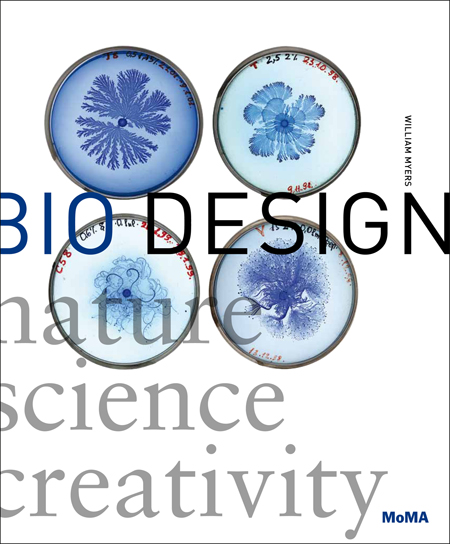Available at Amazon.com
An Invisible Crown Tops the New Hearst Tower
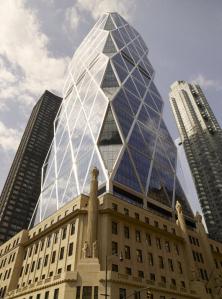 The Hearst Tower marks a fresh start for building and for New York City. Its ambition has many layers, all of which are healthy, deep seated, and admirable. The new structure is located on the west side of Eighth Avenue near 57th Street and rises 44 stories above an original, 1928 building at its base. The tower was completed in 2006 and was the first skyscraper to sprout in New York after 9-11 as well as the first to earn the distinction of LEED Gold Certification by the standards of the U.S. Green Building Council. Carefully considered, the Hearst Tower is a stirring symbol of resurgence, the pursuit of excellence, and social progress through innovation. It is an unqualified success and is the work of Pritzker Prize-winning architect Norman Foster. Continue reading
The Hearst Tower marks a fresh start for building and for New York City. Its ambition has many layers, all of which are healthy, deep seated, and admirable. The new structure is located on the west side of Eighth Avenue near 57th Street and rises 44 stories above an original, 1928 building at its base. The tower was completed in 2006 and was the first skyscraper to sprout in New York after 9-11 as well as the first to earn the distinction of LEED Gold Certification by the standards of the U.S. Green Building Council. Carefully considered, the Hearst Tower is a stirring symbol of resurgence, the pursuit of excellence, and social progress through innovation. It is an unqualified success and is the work of Pritzker Prize-winning architect Norman Foster. Continue reading
Posted in Architecture
Tagged Architecture, hearst tower, LEED, New York architecture, norman foster, skyscraper
In Attics and Closets, ‘Biohackers’ Prove the Spirit of Thomas Edison Endures
 Late one night in 1867 a young man worked after-hours on his own project in a Western Union office in Louisville, Kentucky. The precocious and untrained 20 year-old was experimenting with battery components when he accidently spilled sulfuric acid on the floor, which proceeded to drip in between the wooden floorboards and onto his boss’s desk below. Continue reading
Late one night in 1867 a young man worked after-hours on his own project in a Western Union office in Louisville, Kentucky. The precocious and untrained 20 year-old was experimenting with battery components when he accidently spilled sulfuric acid on the floor, which proceeded to drip in between the wooden floorboards and onto his boss’s desk below. Continue reading
Posted in Biotechnology, Uncategorized
Tagged Biotechnology, diy, diy bio, genetic engineering, wall street journal
Nanobots and the Future of Design
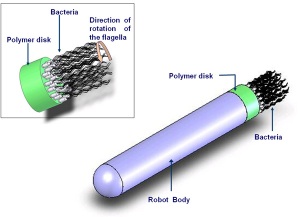 Biomimicry and nanotechnology meet in a new innovation that will allow nanobots or miniature robots to swim inside the bloodstream. These little machines are so small that thousands can crowd on the head of a pin. Researchers at the École Polytechnique de Montréal, in Canada, led by professor of computer engineering Sylvain Martel, have coupled live, swimming bacteria to microscopic beads to develop a self-propelling device. Continue reading
Biomimicry and nanotechnology meet in a new innovation that will allow nanobots or miniature robots to swim inside the bloodstream. These little machines are so small that thousands can crowd on the head of a pin. Researchers at the École Polytechnique de Montréal, in Canada, led by professor of computer engineering Sylvain Martel, have coupled live, swimming bacteria to microscopic beads to develop a self-propelling device. Continue reading
Posted in Nanotechnology
The Therapeutic Spiral
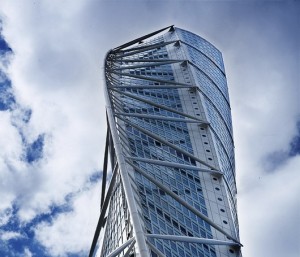 “in wildness is the preservation of the world.” –Henry David Thoreau
“in wildness is the preservation of the world.” –Henry David Thoreau
The spiral has been a popular motif in the arts for centuries but it resurges today as a result of a renewed awe of nature. The areas of fine art, industrial design, and architecture provide strong examples of this trend. A good jumping off point is Santiago Calatrava’s 54-story Turning Torso building erected in Malmø, Sweden. Continue reading
There IS Bad Design in Italy
 Well, there’s not much, but if you find yourself in the international terminal in Milan’s airport in need of an espresso, you’re in for a headache because of poor design. The Caffe Tazza d’Oro emits enticing smells of freshly brewed Arabica and the sharp, violent sound of milk steaming but its seduction leads to a disappointment. In fact, you’re fortunate if you can obtain a drink at all via a system of purchase and pick-up that must have been dreamt up by bored comedians. Continue reading
Well, there’s not much, but if you find yourself in the international terminal in Milan’s airport in need of an espresso, you’re in for a headache because of poor design. The Caffe Tazza d’Oro emits enticing smells of freshly brewed Arabica and the sharp, violent sound of milk steaming but its seduction leads to a disappointment. In fact, you’re fortunate if you can obtain a drink at all via a system of purchase and pick-up that must have been dreamt up by bored comedians. Continue reading
Posted in Uncategorized
Tagged graphic design, Italy, retail design, signage, traffic flow
Poetry meet Prose, and Spreadsheets
 An aspect of design that gets short shrift in the media is quantitative measurement. Designs – be they of cities, buildings, coffee cups, or posters are too seldom analyzed with an economist’s perspective. Far too often, designs are recognized for being innovative, particularly functional, or formally beautiful and that’s all. I believe this obscures the reality that design is essentially an attempt to respond to a need within the constraints of scarcity.
An aspect of design that gets short shrift in the media is quantitative measurement. Designs – be they of cities, buildings, coffee cups, or posters are too seldom analyzed with an economist’s perspective. Far too often, designs are recognized for being innovative, particularly functional, or formally beautiful and that’s all. I believe this obscures the reality that design is essentially an attempt to respond to a need within the constraints of scarcity.
Posted in Economics
Libeskind: An Architect Indeed
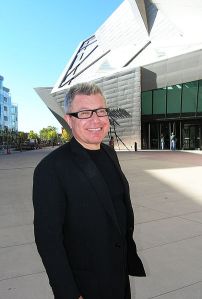 A verbose Daniel Libeskind spoke tonight at the Strand bookstore in New York to promote his new book Counterpoint. The standing-room-only crowd was enamored of the charm, drive, and mostly canned wisdom that flooded the room in waves of anecdotes and rhetorical flourishes. It was a good show, but odd that New Yorker critic Paul Goldberger didn’t attend as scheduled. Libeskind bounced between many subjects and penetrating ideas, revealing the extraordinary agility of his mind, a penchant for music metaphors fired off in 16th notes, and a supernatural drive that is appropriate both to the profession and the city. Continue reading
A verbose Daniel Libeskind spoke tonight at the Strand bookstore in New York to promote his new book Counterpoint. The standing-room-only crowd was enamored of the charm, drive, and mostly canned wisdom that flooded the room in waves of anecdotes and rhetorical flourishes. It was a good show, but odd that New Yorker critic Paul Goldberger didn’t attend as scheduled. Libeskind bounced between many subjects and penetrating ideas, revealing the extraordinary agility of his mind, a penchant for music metaphors fired off in 16th notes, and a supernatural drive that is appropriate both to the profession and the city. Continue reading
Veritas: Then and Now
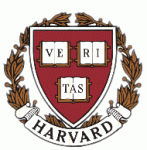 The meaning of truth has changed since John Ruskin’s time. Veritas, the Latin word for truth is the slogan of Harvard University and appears on its seal. In Ruskin’s time, this seal spelled out the word Veritas across the images of three books, two of which faced outward while the third faced away form the viewer. This very conscious graphic choice suggested that a part of truth remained unknowable to reason. Continue reading
The meaning of truth has changed since John Ruskin’s time. Veritas, the Latin word for truth is the slogan of Harvard University and appears on its seal. In Ruskin’s time, this seal spelled out the word Veritas across the images of three books, two of which faced outward while the third faced away form the viewer. This very conscious graphic choice suggested that a part of truth remained unknowable to reason. Continue reading
Posted in Architecture
Tagged Architecture, design, harvard, logo design, Ruskin, truth
Yes We Can Design
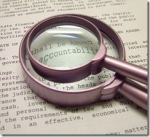 Web-enabled transparency and feedback anticipate the future of Democracy
Web-enabled transparency and feedback anticipate the future of Democracy
An alert and informed citizenry is an essential ingredient in any free and healthy nation. But are we well informed? Do we know enough about, say, how government spends our money? Do we have sufficient public forums to learn about and discuss the actions of our leaders? The design of new government websites shows that we are on our way to additional and more effective spaces for these activities. These sites suggest that standards of government accountability are developing quickly and along with, albeit a bit behind advances in web design.
Posted in Web Design
Tagged accountability, democracy, design, obama, progressive, search technology, stimulus

